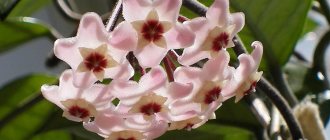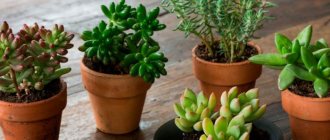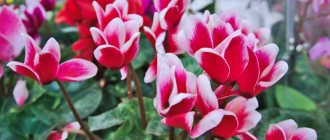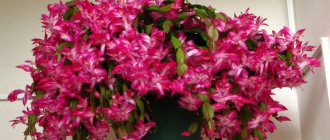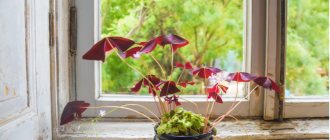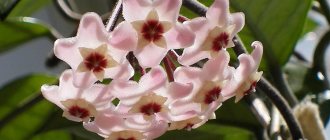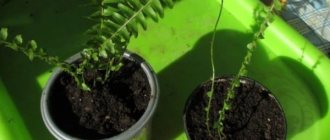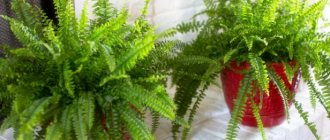Hoya or wax ivy is a liana from the Apocynaceae . In nature, this vine grows in India, Australia and Southern China, where it spreads along the ground and rocky slopes, and hangs from trees. Some species have antennae, with which they climb tree trunks closer to the sun.
Hoya received its name from the famous Scottish scientist Brown, the author of the theory of “Brownian motion”, in honor of the English gardener Thomas Hoy (1750-1822), who worked for a long time in greenhouses with tropical plants for the Duke of Northumberland.
Hoyas are fairly unpretentious plants that do not require much attention. Even with minimal proper care, it can delight with abundant and long-lasting flowering.
At home, this vine is grown as a climbing plant on supports , and as a hanging plant.
About caring for hahoya
Temperature: In summer, the optimal temperature for hoya is 17-25 °C. In winter, the plant prefers a stable temperature of about 15 °C, but can easily withstand 10 °C. There are cases when hoya tolerated a short-term drop to 2 °C. But remember that wintering at too low temperatures can greatly harm the plant. Don't experiment, stick to favorable temperatures.
Lighting: Wax ivy is a light-loving plant, but when placing it, it should be taken into account that exposure to direct sunlight negatively affects the decorative appearance of the leaves. If you have chosen a room with a southern orientation for your hoya, place the pot away from the windows. When choosing a place for growing, keep in mind that hoya does not tolerate rearrangements.
Watering: The plant needs moderate watering only after the top layer of soil dries out. In winter, watering is reduced and brought to a minimum. When watering, remember that it is better not to top up the plant than to overwater it. Hoya tolerates a lack of moisture well, especially since poor watering stimulates the plant to bloom.
Air humidity: Hoya is a drought-resistant plant, but it has been noted that it grows better in high humidity. In the summer, the liana will not refuse spraying.
Fertilizers : Apply 2 times a month in the spring and summer. The first time they do this is in March. In autumn and winter, all fertilizer applications are stopped. It is permissible to fertilize Hoya in the fall, but only if the plant has begun to bloom.
Soil: Hoya is not selective in terms of soil; it grows and develops well in a universal substrate or in a substrate for succulent plants. It is recommended to add sand or vermiculite to the substrate. A thick layer of drainage is placed at the bottom of the pot, which will protect the plant from stagnation of moisture in the soil, and the roots from excessive waterlogging.
Replanting: Wax ivy does not need frequent replanting. Usually it is carried out once every 2-3 years. To grow hoya, they generally use only a tight pot, which has a beneficial effect on flowering. If you want to grow a longer Hoya, it is better, of course, to give preference to a looser pot.
Pests: Wax ivy is a pest-resistant plant, but vines weakened by improper care can be attacked by scale insects and spider mites .
Fertilizer
Twice a month, ivy needs to be nourished with a special mineral complex. The prepared solution is slowly poured into the soil at a short distance from the roots.
Blooming hoya, wax ivy:
Wax ivy needs a lot of bright light to bloom. In winter, when wintering is cool, the temperature regime must be strictly observed. Otherwise, you won’t see flowering this season. The liana blooms mainly in summer and autumn, but can also please you in spring.
If all the rules for wintering care and lighting are followed, but the hoya is in no hurry to bloom, you can resort to stimulating flowering. To do this, the pot with the plant is immersed in warm water for 2 hours, after which the entire plant is sprayed with warm water at 30-40 °C.
Possible difficulties
The shrub has strong immunity and resistance to various diseases. Only with inappropriate care can a plant be attacked by a fungus.
In hot weather, the plant may be attacked by aphids, mealyworms and other pests. In this case, flower growers treat the stems and soil with an insecticide. It is very difficult to get rid of nematodes.
If a plant is infected by this pest, you should resort to drastic methods - cut out healthy cuttings and destroy the diseased shoots. Before planting, the soil and container are sterilized.
Spots on leaves can appear both with a lack of light and with an excess of light. Weak stems and pale leaf color are signs of a lack of fertilizer.
Hoya propagation
The liana is propagated by stem cuttings, layering, and less often by seeds.
For successful rooting, the Hoya cuttings must have at least 2 pairs of leaves; it is recommended to cut it between the nodes.
Wax ivy takes root without problems both in water and in soil; on average, roots appear within 3 weeks. The main condition for successfully obtaining a new hoya specimen is a stable air temperature of at least 20 °C.
The liana successfully reproduces by layering. To do this, make a small incision on the shoot, cover it with sphagnum moss and wrap it with plastic film. Within a week, roots form on the layering, after which it can be cut, the cut site is sprinkled with activated carbon and planted in a separate container as an independent plant. The cuttings can be rooted even easier by digging them in or covering them with moss.
In order for the plant to please you with flowering as quickly as possible, it is recommended to take parts of flowering hoi for propagation.
At home, when we are all limited by space, we have to restrain the growth of our pets. Hoyas do not require special pruning, especially if the long vines curl on the support on their own, or descend from the flower pots, because it is quite easy and very careful to push in the right direction so that they do not cling to curtains and windows, but concentrate on each other or the support.
However, many hoyas have straight-growing or simply non-climbing vines. If you want to get a rich bush, you should pinch out an overgrown shoot, or cut off a cutting for the purpose of rooting and further replanting in the same pot. Plants such as multiflora or imperialis do not branch very actively, they are erect, and to obtain a dense bush you have to plant several cuttings in one pot.
You should take into account the fact that young shoots really do not like to be touched. Often careless handling leads to the plant drying out this shoot, preserving only those internodes that have managed to mature. It remains to trim the dried area, always 1-2 cm above the living trunk. It is precisely because of the vagaries of young shoots that it is not recommended to root young shoots with fragile leaves. Basically, such rooting ends with at best one internode remaining. For rooting, it is better to take internodes of the second or third level and no more than two.
In the fall, when the growth of the plant stops and the shoots have already become stronger, they can be safely removed from their favorite secluded places and screwed onto a support without the threat of damage. At this time, formation is not a problem, however, carefully look to see if a peduncle has formed on the removed internodes. Most types of hoya, with very rare exceptions, retain peduncles after flowering and then constantly bloom on old peduncles, continuing to form new ones. Cutting off flower stalks means depriving yourself of the pleasure of seeing the plant in bloom for the next season.
Hoya is an evergreen climbing plant belonging to the Lastovnevye family. Today there are over 200 species of this unusual vine. In nature, Hoya wax ivy grows on tree trunks and rocky slopes in the southern regions of China, India and Australia. This plant appeared in domestic culture thanks to the French kings, in whose winter gardens the vines grew up to several meters in length, and their amazing shield flowers were at one time even given as a reward to particularly distinguished subjects.
Description and varieties of Hoya
Among all varieties there are climbing or twining vines. Some species have antennae, with which they cling to various supports. Depending on the variety, hoya leaves are heart-shaped or oval. The color of the leaves is dark green, sometimes tricolor or speckled.
At home, the most common inhabitant of this family is Hoya fleshy. Indoor ampel with long hanging shoots reaching seven meters in length. The juicy dark green leaves of Hoya have an opposite arrangement. The surface of the leaf plate is glossy, as if covered with wax.
Growing conditions
The ideal place for growing hoya at home is a windowsill on the east or west side in the spring and summer. In winter, it is better to place wax ivy on the south side. In hot weather, a flower growing on the sunny side stops its growth, its leaves turn yellow and dry out. Hoya is an excellent plant for decorating residential premises and offices. In addition, it is used as a ground cover flower in winter gardens with good diffused light.
Hoya is an unpretentious indoor flower that requires a minimum of care and attention. Infrequent watering and replanting, rare rotation around its axis is exactly what it needs for full growth. That is why this flower can be found more often in offices than at home. This plant covers the entire wall with its tenacious and long shoots.
The most common varieties of wax ivy include Hoya majestic, Hoya longifolia and Hoya beautiful.
general characteristics
Hoya is classified as a vine and is also called wax ivy. It is capable of branching, climbing onto a support, although some species are bush-like.
Flowers and leaves are dense and shiny, as if made of wax or porcelain. The root system is superficial. Inflorescences are umbellate, with or without fragrance.
Indoor Hoya looks spectacular in any interior, which is another reason for growing it.
All types are different, but generally unpretentious - keeping them at home does not present any special problems. However, this exotic requires caution: in some sources, wax ivy is called a poisonous plant, so it should be kept away from children.
Rules of care
Despite the fact that caring for hoya at home is not difficult, there are still some rules that should be followed in the process of growing it:
- The optimal temperature is 18-25 degrees in the summer. In winter, wax ivy needs a lower temperature - about 15 degrees. Hoya tolerates even lower temperatures down to ten degrees. But this is a heat-loving flower, so at lower temperatures, it will begin to shed leaves en masse.
- Wax ivy does not like frequent rearrangements. Because of this, its leaves and flower buds fall off. He requires a permanent habitat. Because of this species, Hoya is not recommended for landscaping balconies in the warm season.
- This plant grows well indoors with bright, indirect light. It can cover the entire wall if placed in a room on the south side.
- Wax ivy does not need high air humidity. On hot days in summer, the flower is frequently sprayed.
- Basic care for hoya at home includes systemic watering. This plant tolerates lack of moisture well. Watering is carried out only after the upper earthen clod has dried. In winter, hoya is watered less often, which has a positive effect on its flowering.
- Feeding wax ivy is carried out throughout the entire growing season - twice a month. The first fertilizer is applied in early March. In winter, Hoya does not need to be fed.
- To achieve good flowering, vines provide good lighting, coolness and scanty watering. To do this, the temperature must be between 13-16 degrees. To stimulate flowering, the hoya along with the flowerpot is placed in water at room temperature for a couple of hours. The ground part is sprayed with water heated to 40 degrees. It is strictly forbidden to move a flowering plant to another place. Otherwise, it will cause the flower buds to fall off. It is important to know that hoya flower stalks are not trimmed, as new inflorescences will appear on them next year.
- Wax ivy does not need fertile soil. In its natural environment, this plant grows on rocky ground or trees. To plant it at home, you can prepare a nutrient mixture. Sand, peat, humus, leaf soil and turf are mixed in equal parts. Also suitable for planting hoya is a substrate of two parts turf, one part greenhouse and leaf soil. To prevent rotting of the flower roots and waterlogging, a good layer of drainage - made of expanded clay or pebbles - is placed at the bottom of the planting container.
How to get new plants?
Caring for hoya at home includes the propagation procedure. This plant can be propagated by cuttings, seeds and layering.
The first method is the most popular and easiest. For rooting, use a shoot with several leaves. It is cut between the nodes. The process of rooting cuttings is carried out both in water and in a soil mixture of sand and peat. Further care of the cuttings until they take root is to ensure a stable temperature within 20 degrees. After about three weeks, the first roots will appear on the shoots.
The main advantage of propagation using layering is the resulting young plant, which blooms in the year of planting. You need to make an incision on the shoot of the mother ivy, then cover it with moistened moss and tie it with polyethylene. After roots appear on the layering, it is separated from the main flower and planted in the soil. Some gardeners lay the stem on the soil in a nearby planting container, cover it with moss and secure it well. As soon as the shoot takes root, it is carefully cut off from the main flower.
To successfully propagate Hoya at home, it is necessary to use layering or cuttings from adult specimens.
Seed propagation requires a lot of time and great care, so it is almost never used in amateur cultivation, but only for breeding new varieties and hydridization.
Landing
To plant the plant, you need to purchase a suitable pot. The crown of the shrub is prone to rapid growth, so it is important to take care of reliable support. The soil can be bought in ready-made briquettes, or you can make your own mixture from:
- Sphagnum moss;
- peat;
- perlite.
Important: in order to enjoy abundant flowering more often, select a tight container.
Problems in growing
Hoya is one of the few hanging plants that has increased resistance to pest invasion and disease. Only illiterate care can cause this flower to be damaged by spider mites and scale insects. Damaged specimens are sprayed with insecticidal preparations. Actellik is very suitable for this. To prevent the appearance of root nematodes, the planting soil is steamed.
Many gardeners, growing this ornamental plant at home, often encounter many problems:
- Fall of leaves. This process is caused by waterlogging of the soil or moving the flower to another place. This can also happen due to a sharp drop in temperature in winter.
- The appearance of spotting on the leaves due to insufficient lighting or sunburn.
- Wax ivy does not bloom for two reasons - increased temperature in winter or poor lighting. To stimulate this process, the flower can be given a warm shower.
- A plant growing in full sun will most likely have leaves that become lighter, dry out, and curl. It is recommended to keep Hoya in a bright place, but with protection from direct sunlight.
- Shedding of flower buds and falling leaves occurs due to dry air in the room or moving the flower to another place.
- If your hoya grows very slowly and its leaves have turned pale, it means it is lacking nutrients. Such a plant should be transplanted into new soil.
Mostly ivy is grown in office premises, not at home. The reason for this was superstition. Previously, it was believed that hoya was a plant that survived from the home of all male representatives. There is an opinion that this vine brings only misfortune. Although, there are completely different opinions about this flower. It is believed that wax ivy is a flower of family well-being, harmony and prosperity. Therefore, it is recommended to place it in the bedroom. By the way, in the homeland of wax ivy, in China, it is one of the most beloved house plants, but there, even though they won’t keep anything in the house, Feng Shui doesn’t allow it.
